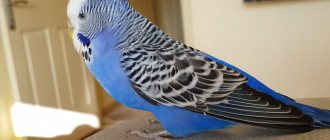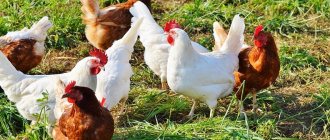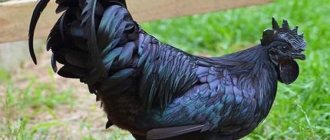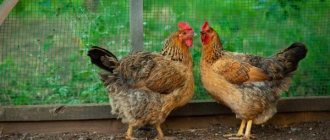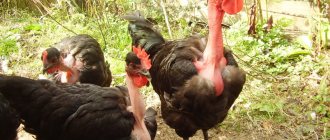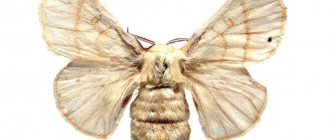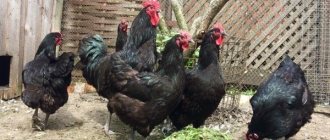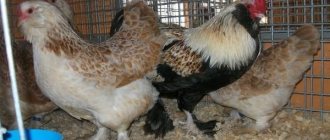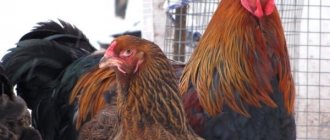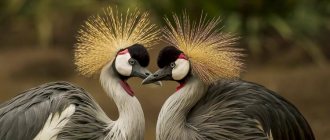It will not be a discovery to anyone that chickens are bred to produce eggs, meat, feathers and down. But among the huge variety of meat, egg and meat-egg breeds, there are also quite exotic ones. Chinese silk chickens are an ancient Asian ornamental breed, which today can surprise even experienced poultry farmers with its appearance. What is so unusual about these poultry?
We will try to tell in detail in the article about this interesting and ancient breed of poultry.
A little history
The first to mention Chinese silk chickens in his writings was the Greek philosopher Aristotle, who described them as birds covered with cat hair. The same breed, however, called “Cochin black chickens,” is described in the chronicles of the Chinese Tang dynasty. In the 13th century, the Venetian traveler Marco Polo wrote about similar birds with blue beaks and black skin in his notes. In Russia, the Chinese silk breed of chickens appeared in the 18th century and was found in Siberia, Astrakhan and St. Petersburg. At the end of the 19th century, the standard of this breed was officially recognized in the United States.
Breed Features
If you have never met a Chinese silkie chicken, the photo below will allow you to appreciate the unusual and exotic nature of this bird.
Representatives of this breed are distinguished from all other chickens by a number of unique features:
- In China, silken chickens are called wu gu ji, which means “chicken with raven bones.” This name is not accidental, since the body of a bird of this breed contains a huge amount of such natural pigment as melatonin. It is because of this that their skin and bones are colored blue-black, and their meat is gray-black. The unusual turquoise color of the beak, crest and lobes is also due to the presence of this pigment.
- Unlike other breeds, the Chinese silkie chicken has not four, but five distinctly separated toes on its feet. In addition, all the bird's fingers are covered with feathers.
- Silk chickens, also called downy chickens, have feathers in the structure of which there are no hooks that connect the fibers to each other. Because of this, the feather covering of these birds looks more like fur or wool.
- On the head, the Chinese silk chicken (the photo below clearly demonstrates this) has a crest, sideburns and a beard.
Cochin
The Cochin is truly a giant breed. Initially, this Chinese species shocked the whole of Europe with its enormous size, but these days this breed has become one of the most popular, especially in Russia.
- Color. There are no monochromatic chickens; most often they combine several colors at once: brown and all its shades, white, gray, black, green.
- Head. Small, out of proportion to the body.
- Crest. Standing, not large.
- Feathers. Not long, tightly covering the entire body.
- Eyes. Deep orange, large.
- Beak. Gray, massive.
- Ears. Symmetrical, invisible under the plumage.
- Neck. Short, voluminous, slightly rounded.
- Torso. Voluminous, densely covered with plumage.
- Legs. Massive, covered with feathers, often not visible behind it.
- Tail. Short. Feathers are raised up.
A very large bird - the weight of the female and male can reach 5 kg. Laying hens from 6 months of age become excellent brood hens, producing 120 large eggs per year. Despite their intimidating massiveness, they are a sociable and friendly breed. They get along easily with other roommates. It is interesting to get acquainted with the selections of chicken breeds: the most unusual, the largest, red in color; decorative, fighting, meat and egg.
Appearance
Birds of this breed are characterized by a dense, strong and rounded body on all sides. The body, legs (rather short), and metatarsals of these chickens are feathered. The tail, consisting mainly of tail feathers, is fluffy and short, almost completely hidden under the long plumage of the back. The heads of these birds are small and graceful, decorated with a small blue-turquoise beak, smoothly rounded bluish lobes and feathery crests.
Roosters are slightly larger in size than females. In addition, their heads are decorated with a pinkish crest and a crest, as if thrown back. Chinese silk chickens and roosters have brown-black eyes, rather deep-set.
Important points of selection
When selectively breeding Chinese silk chickens, selection is necessarily made according to the color scheme of the plumage.
Each colored branch requires its own fenced area for placement. For ten hens it is enough to purchase only one rooster, but breeders with extensive experience recommend keeping two males in case of replacement, so as not to be left without a sire. The number of females is renewed once every five years. Roosters are changed every two years. Chinese silk chickens are characterized by late maturation; up to four months, their sexual characteristics remain practically undeveloped. However, snares compensate for this with good fertility. Today, these birds are often crossed with other breeds to increase egg mass and egg production, and increase muscle mass. The influx of new blood has a good effect on the livestock itself.
Varieties
Depending on the color of the plumage, there are several subspecies of Chinese silk chickens, or snares, as poultry farmers also call them:
- wild;
- white;
- yellow;
- blue;
- black and others.
We will not list them all, since European standards distinguish slightly different subspecies of this bird than American ones, and only a specialist will be able to understand all the nuances of what colors Chinese silk chickens can be.
The reason for culling from a pure breed for these birds may be spotting or the presence of any color or shade different from the standard, sparse or coarse plumage, underdevelopment or absence of the fifth toe, an overly large tail, inappropriate color of the skin, beak, eyes or comb.
Diseases
Chinese downy chickens are susceptible to the following diseases:
- rickets;
- coccidiosis;
- poisoning;
- pulmonary inflammation;
- intestinal infections.
Infestations of ticks and fleas are especially dangerous for chickens.
- Parasites
- Infectious
- Other
Chicken mite
How to treat a chicken coop and how to treat a bird. Description of drugs and methods of control
Read
Coccidiosis
Thirst, loss of appetite, swelling, bloody droppings, anemia, weakness, poor coordination
Read
Ascariasis
Loss of appetite, liquid droppings, pale mucous membranes of the comb, limbs, ruffled plumage, lethargy, vomiting
Read
Amidostomiasis
Symptoms of the acute form: apathy, general weakness, decreased or lack of appetite, breathing problems, unsteady gait, retarded growth and development
Read
Prostagonymosis
Decreased mobility, loss of appetite, unsteady gait, bloating, fever, impaired egg laying, exhaustion
Read
Knemidocoptic mange (“lime foot”)
Acute symptoms: light gray bumps appear on the legs, the bird limps and stands on one leg, the cloaca and joints become inflamed, the beak is deformed
Read
Heteracidosis
Symptoms: indigestion, diarrhea, loss of appetite, lethargy, decreased egg production, retarded growth and development
Read
Trichomoniasis
Symptoms of the acute form: fever, depression and loss of appetite, diarrhea with gas bubbles and a putrid odor, enlarged goiter, difficulty breathing and swallowing
Read
Pullorosis (typhoid fever, salmonellosis)
Weakness, lack of coordination, drooping eyelids, difficulty breathing, lack of appetite, indigestion
Read
Colibacillosis
Lack of appetite, thirst, sudden increase in temperature, pale scallops, diarrhea
Read
Pasteurellosis
Fever, foamy mucus, change in stool color, refusal to feed, thirst, lethargy, wheezing, heavy breathing
Read
Marek's disease
Paralysis of the limbs, difficulty breathing, severe exhaustion and loss of strength, refusal of food and water, pallor of the scallop
Read
Gumboro disease
Diarrhea, loss of appetite, trembling legs and head, sudden death
Read
Laryngotracheitis
Weakness, swelling of the neck, difficulty breathing, cough, wheezing, blood clots in the mucus released when coughing, lack of appetite, indigestion
Read
Bird flu
Refusal to eat, anorexia, diarrhea, purulent discharge, hoarse breathing, greenish-brown droppings, seizures, darkening of the ridge
Read
Newcastle disease
Decreased appetite, fever, respiratory distress, immobility, conjunctivitis, bloody diarrhea
Read
Apteriosis
Complete or partial absence of plumage, loss of tail feathers, broken embryonic fuzz in young animals, delayed growth of plumage, pecking
Read
Pterophagy
Plucking and eating feathers. What is the reason, why does it require urgent intervention and how to prevent the disease?
Read
Yolk peritonitis
Symptoms of the acute form: loss of appetite, gray-green color of feces, sudden drop in egg production, calcareous deposits on the shell, bluish tint and baldness of the abdominal skin
Read
Cloacite
Symptoms: depressed state, decreased appetite, weight loss, increased need for water, loss of plumage, inflammation and bulging of the cloaca, the presence of ulcers on the mucous membrane, decreased egg production
Read
Description of the breed: Chinese silk chicken
Birds of this breed cannot boast of heavy weight. So, roosters can grow up to 1.5, and hens up to 0.9-1.1 kg. But their meat of an unusual black-gray color is considered in Chinese medicine not only as a delicious food, but also as a medicine that can help with many diseases. Recent studies by German scientists have confirmed that it has a unique composition and contains many amino acids, micro- and macroelements that can support health. No less useful are the eggs of the Chinese silk chicken, of which one bird can lay up to 100 per year. But the unusual thing about birds of this breed is that they are cut to get a soft feather. This does not cause any harm to the chickens, and the owner from each bird can receive 60-70 g of fine feathers, more like down, every month.
Another feature of this breed is its developed brooding instinct. Silk hens are very caring hens, and with proper care they will take care of their foundlings as if they were their own chicks.
Productivity
In Russia and Western countries, Chinese chickens are kept, as a rule, for eye candy. In their homeland, silky beauties are valued for their meat . The appearance of it is not very appetizing. Nevertheless, the unusual black meat with excellent taste is considered a delicacy in Chinese cuisine. Most often it is used to prepare curries, soups, broths or stews. It is not recommended to fry black chicken - the meat will turn out dry and tough. For the best manifestation of taste and medicinal properties, ginseng, ginger, wolfberry and orange zest are added to dishes. Chinese chicken carcasses are smaller than traditional broilers, but its meat does not contain fat and is much more refined and tender.
Chinese silk chicken meat in medicine
The Chinese actively use black meat in traditional medicine.
The use of this product has a beneficial effect on the treatment of tuberculosis, migraine, kidney, lung and stomach diseases. The Chinese chicken meat study was conducted at the University of Jena. Zoological scientists have discovered that it contains:
- amino acids;
- iron;
- phosphorus;
- calcium;
- vitamins E and group B;
- nicotinic acid.
Meat is rich in globulin, which is necessary to strengthen bones and muscles.
In addition, globulin is recommended for patients suffering from anemia. For medicinal purposes, doctors advise eating 150 grams of silky chicken meat per day.
Contraindications: Do not eat Chinese silken chicken if you have diarrhea, cough or fever.
Eggs
Furry hens lay 120 eggs per year. The weight of the egg is 30-40 grams. Eggs have a very important property - they do not contain cholesterol. Therefore, they can be eaten even by people with liver diseases.
Using down
Silkies are one of the few birds kept for their high-quality, soft down.
Shearing technology is no different from shearing sheep. One bird gives up to 70 grams of delicate fluff per haircut. In less than a month, the birds can be cut again. Every year there are more and more breeders of fluffy Chinese chickens. And although the price for an adult bird is $50, the unique healing properties of eggs and meat, the attractive appearance and relative undemandingness of silky chickens give hope that the breed will gain popularity in Russia.
Are they difficult to maintain?
There are no special difficulties in keeping birds of this breed at home. Hygienic and sanitary requirements for premises and equipment are the same as for other chickens.
It is also important that these birds cannot fly at all, and therefore they simply do not need perches. Snares are not particularly picky about food. In addition, these birds are quite “frost-resistant” and can overwinter in an unheated room. However, if you want Chinese silk chickens to lay eggs during the winter months, their maintenance will be slightly different. First of all, it is necessary that the room be warm and light for 12–14 hours. Birds of this breed can do without walking, but if you are going to let them out into the street, then you need to properly protect the walking area from all sides, including from above.
Rules of care and maintenance
The cornerstone of keeping Chinese silk chickens is exclusive downy plumage. To minimize contamination of the “fluffy beauty,” experts recommend keeping fine sand in cages or on a loose carpet of sawdust or hay.
Drafts are very harmful to health. Chickens get sick easily from sudden changes in temperature. Humidity leads to wet feathering, the formation of tangles and the occurrence of various skin pathologies.
Silk chickens do not fly: the roost is set up low from the floor. To save space in the chicken coop, ladders are built along which the birds get to the nests.
As with most chicken breeds, nipple drinkers and baths with a mixture of ash and sand are required to be freely available. Chickens enjoy bathing, cleaning their feathers and getting rid of skin parasites.
Care requirements
Exotic Chinese chickens are very easy to care for. Nothing extraordinary is required (everything is within the traditional requirements for keeping chickens):
- timely feeding with high-quality products;
- strict compliance with sanitary and hygienic standards in the poultry house;
- heating the chicken coop in autumn and winter;
- artificially lengthening daylight hours to improve egg production;
- fencing livestock from predators.
Room
The main rule of the chicken coop: cleanliness and order. When choosing a ready-made project, or planning a chicken coop yourself, you need to take into account a lot of aspects:
- space for equipment: automatic drinking bowls, nesting boxes, ladders, feeders, baths, tools for cleaning premises;
- the possibility of separating common perches from the cages of chicks and young animals;
- organization of lighting and ventilation;
- placement of fire and security alarms.
A thoughtful layout of the premises and a carefully implemented plan for building a chicken coop will create comfortable conditions for keeping poultry.
Walking yard
Many snare breeders do not organize special walking around the chicken coop. The birds are simply released to walk around the yard: they do not create any special problems. Aborigines are not allowed to walk at all, practicing cage keeping. For other representatives of the species, the possibility of free movement is recommended (the well-being of chickens improves and egg production increases).
Molting, break and completion of egg production
Chinese silk chickens do not have juvenile molting (replacement of the primary (juvenile) feather with the main one during intensive growth of the young). But throughout their life, every year in the spring, Chinese downy ones renew their magnificent “clothes”. During this period, black whales become slow and lethargic, completely stopping egg laying. Within a month, egg production is restored.
The period of maximum productivity of laying hens does not exceed four years: experienced breeders regularly update the stock every three and a half years.
Frost resistance of the breed
Directories of expert content characterize the Silki breed as frost-resistant. Exhibition specimens can withstand significant frosts, but the most comfortable thermal conditions should not fall below minus five degrees.
Adult silk chicken menu
The characteristics of the breed require a special menu:
- Half of the daily diet is dry feed grain. This base is supplemented with compound feed;
- to maintain fluffiness, you need to add sunflower seeds, nettle seeds, and oatmeal to the menu twice a week;
- In winter, fertilizing with dried herbs is recommended;
- veterinarians insist: birds require mineral supplements (egg, bone and shell meal) all year round;
During the summer walk, the birds themselves will supplement their diet with young greens.
Chicks from the incubator
If you plan to breed snares using an incubator, then a number of nuances should be taken into account:
- Chinese silkie chickens are half the size of regular chicken breeds. Therefore, such babies, especially in the first few days, are very sensitive to even small temperature changes.
- Immediately after they hatch, the chicks should be in a room with a temperature of at least +30 0C.
- After a week, you can lower the temperature to +27 0C and reduce it weekly, but no more than three degrees.
- Month-old chicks feel quite comfortable even at a temperature of +18 0C.
Incubation
Hatching eggs by a hen is the best option for breeding Chinese downy chickens. Using an incubator is also possible, but it must be taken into account that Chinese chickens are much smaller than usual, so they require additional care, which consists of observing a special temperature regime.
Table of temperature and humidity modes
| Period |
